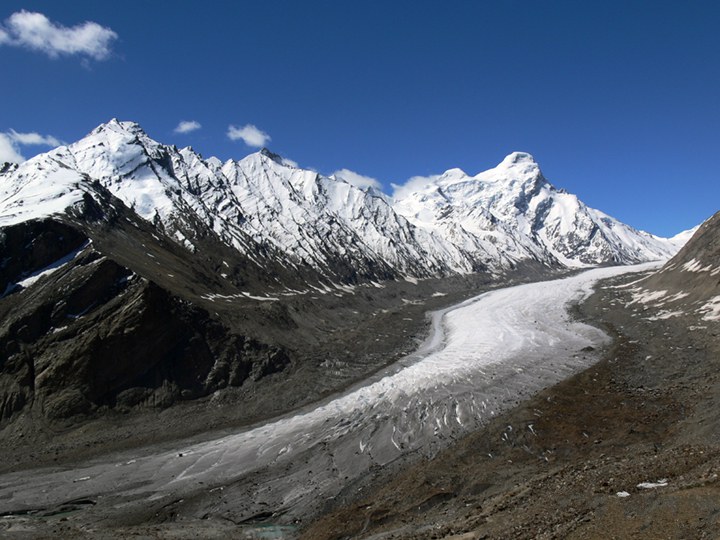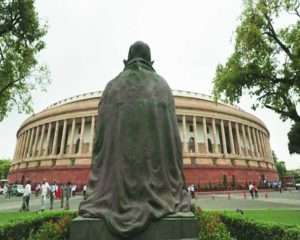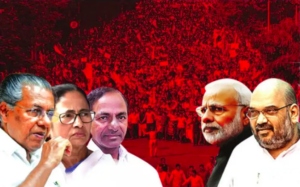THE POLLUTED GLACIER
Dr K K Paul | This article was first published in The Statesman on Sunday, 29 March 2020.
It has been a little more than a decade since the claims made in the 4th Assessment Report by the IPCC on recession of Himalayan glaciers, were contradicted. In fact, as exposed subsequently, the claim in the IPCC report was not based on any primary scientific study but was based on some secondary material taken from a popular science journal.
In order to substantially address the anxiety, particularly in respect of Gangotri glacier, a study was conducted by the National Institute of Hydrology. This showed that retreat of Gangotri glacier will not have drastic influence on the flow of river Ganga. The latter is not totally dependent on glaciers for its water even in the head-waters region. The percentage of snow and glacier-fed contribution progressively reduces as one moves downstream. Rainwater and sub-surface flows contribute more than 70% of the flow of river Ganga at Haridwar.
On the other hand very few studies have been undertaken to realistically analyse the present state of affairs in Himalayan glaciers and make projections for the future, for appropriate policy formulations. In a collaborative project with Ministry of Environment, Forest & Climate Change (MoEF&CC), Indian Space Research Organisation (ISRO) has carried out mapping of Himalayan glaciers using Indian satellite data during 2004 to 2007. The study shows that there are 34,919 glaciers spread over 75,779 sq.km in Indus, Ganga and Brahmaputra basins covering Himalaya and Trans-Himalaya including Karakoram region. ISRO has monitored the glacier advance and retreat of 2018 glaciers, across the Himalayan region using satellite data of 2000-01 to 2010-11, and shows that 87% of glaciers showed no change, 12% glaciers retreated and 1% glacier have advanced.
It is a well known fact that Black Carbon (BC) is emitted in the atmosphere due to incomplete combustion of fossil fuels, motor vehicle and aircraft exhausts, biofuel, and biomass. It consists of elemental carbon in several forms. The largest of black carbon emitters are Asia, Latin America, and Africa. Some estimates put that China and India together account for 25-35% of global black carbon emissions. On a global basis, approximately 20% of black carbon is emitted from burning bio fuels, 40% from fossil fuels, and 40% from open biomass burning.
According to a reply given in the Parliament by the Minister for Environment on 13th December last year, black carbon is monitored on Himalayan glaciers by various institutions. As monitored by GB Pant Institute of Himalayan Environment and development, BC concentration over the Parbati Glacier in Himachal Pradesh, is ranging between 0.34 µg/m3 – 0.56 µg/m3. In the foothills of the Parbati, Hamta and Beas Kund glaciers the BC concentration is 796 ng per cubic metre, 416 ng per cum, 432 ng per cum. As monitored by Wadia Institute of Himalayan Geology, in Gangotri glaciers, BC concentration is ranging from 0.01 µg per cum to 4.62 µg per cum, the figures for Gangotri glacier being significantly higher than the others. It is known that when black carbon is deposited on ice and snow, it absorbs sunlight, raises the surface temperature and causes the snow to melt. Black carbon has emerged as a major contributor to climate change. Increase in accelerated melting of glaciers is also an indicator of climate change. Investigations revealed that the seasonal cycle of increase in black carbon was largely influenced by emissions from agricultural burning in western part of the country and forest fires along the Himalayan slopes. According to an estimate over 40000 hectares of forest area has been damaged on account of forest fires during the last 20 years in Uttarakhand alone.

We are aware that Beas Kund in Himachal Pradesh is located in Rohtang area, while Gangotri is in Uttarakhand. The National Green Tribunal while addressing the Rohtang matter had observed that Black Carbon and aerosol optical depth have been found to be high, as also PM 2.5 was found to be beyond the prescribed limits. The NGT also observed that there was heavy increase in tourism which has its own adverse impact on environment and ecology. This resulted in certain restrictions being placed for approaching Rohtang-Beas Kund area.
While the figures given here indicate the surface condition of Gangotri to be more affected than the other glaciers, apparently much less has been accomplished here despite a judgement from the High Court, as compared to Rohtang and Beas Kund area. In a landmark judgement , the Uttarakhand High Court at Nainital had invoked its parens patriae jurisdiction to declare the glaciers including Gangotri as legal entities and juridical persons in order to conserve and preserve them. The High Court also directed the State Government to frame guidelines for the protection of glaciers by issuing limited number of passes to tourists and have also asked to examine the possibility for imposing a glacier tax. The amount realised by way of this tax was to be used for the benefit of people visiting the area including the pilgrims. The High Court had also banned burning of fossil fuels within 1 km from the glaciers, except in case of armed forces personnel. The Nainital judgement has been silent on black carbon pollution from vehicular emissions while the NGT judgement in respect of Beas Kund has been very specific, resulting in fixing limits on the number of various types of vehicles.
With the economic and developmental activities accelerating at a fast pace, there has been a corresponding increase in human activities. While figures of a few lakhs of tourists and pilgrims are quoted, we often tend to overlook the related increase in vehicular traffic and particularly those of diesel vehicles. From times immemorial, Ganga and Gangotri have been sacred to multitudes of our countrymen and hence the sensitivity about any regulatory measures in understandable. But ultimately these would have to be balanced, at some stage, so that posterity is not deprived of their blessings on account of the current levels of over exploitation.
(The author is a former Governor and a Sr. Advisor at the Pranab Mukherjee Foundation)





